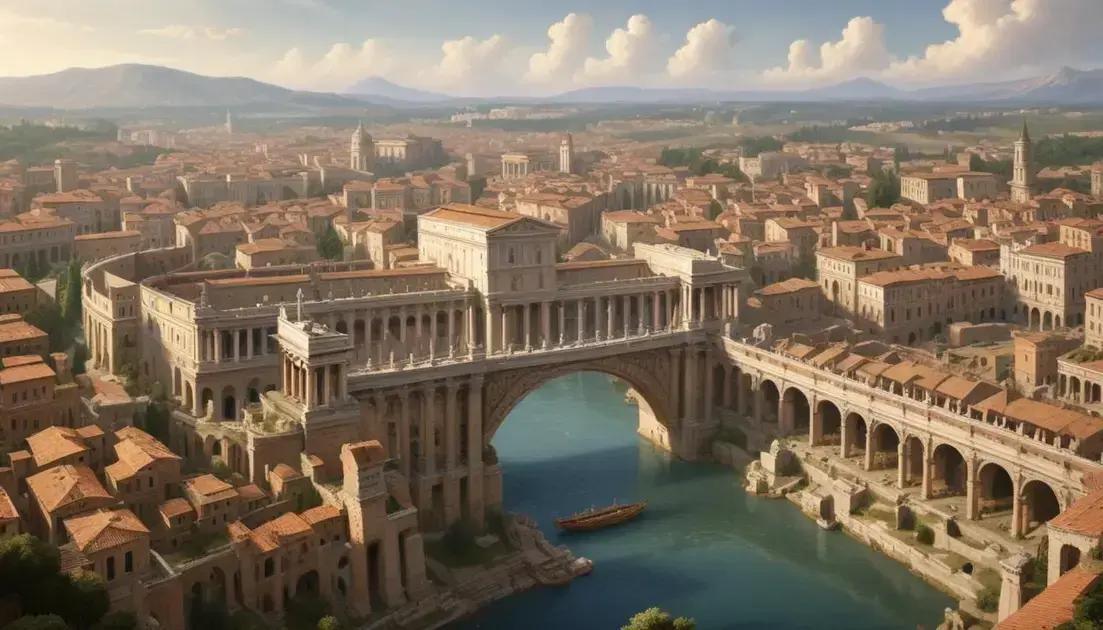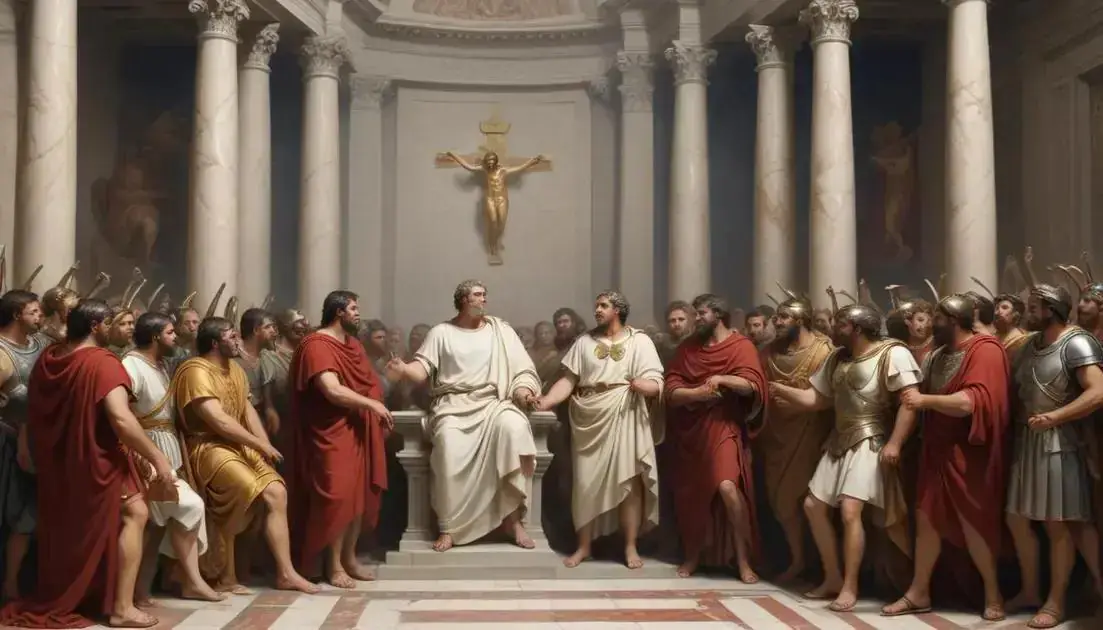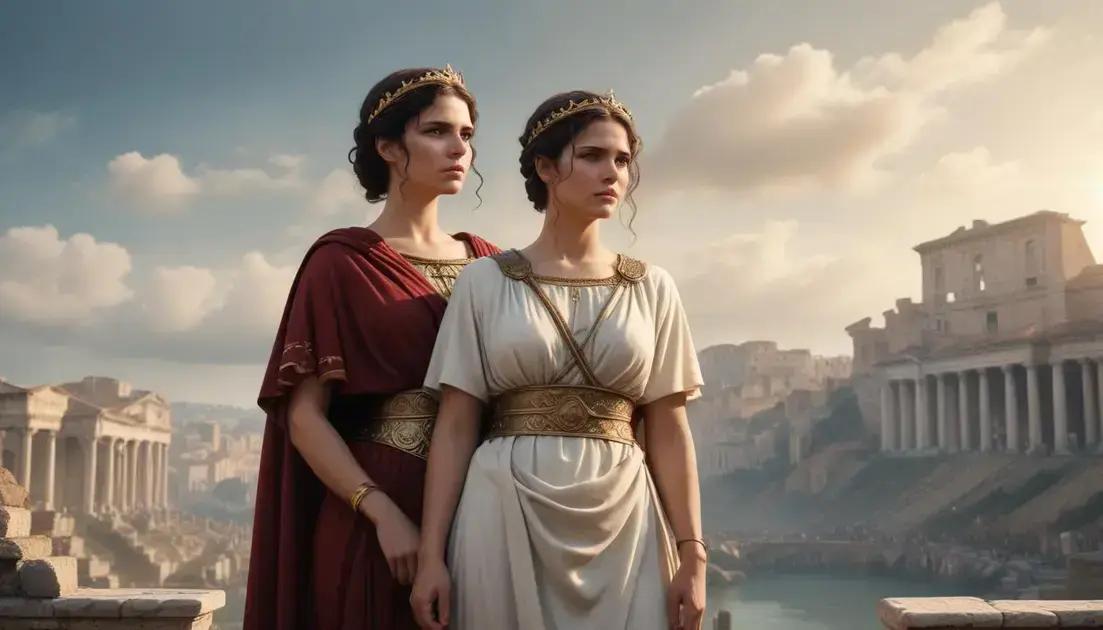
Roman Architecture: Engineering and Power in Stone
The legacy of Ancient Rome includes remarkable innovations in architecture and engineering, showcasing sustainable practices and durable materials. Structures like aqueducts and amphitheaters demonstrate the Romans’ ability to create lasting civic spaces that enhanced community life. Their use of concrete and smart designs, such as those seen in the Pantheon, influenced modern architecture and environmental practices. Understanding these elements highlights the importance of resourcefulness and ingenuity in construction.
Welcome to the fascinating world of Roman Architecture, where we explore how engineering shaped an empire. Curious about how these magnificent structures defied the ages?
The Magnificence of Roman Bridges
The Magnificence of Roman Bridges showcases some of the most remarkable engineering feats of the ancient world. These bridges were not just functional; they were also grand structures that represented power and innovation. Many Roman bridges still stand today, testament to their durability and engineering skills.
One famous example is the Ponte Fabricio in Rome, which has been in use since 62 BC. It connects the Tiber Island to the city with its stone arches. This bridge is a vital link that displays Roman craftsmanship.
Roman bridges were built using materials like stone and concrete, allowing them to support heavy loads. They often featured large arches, which helped distribute weight evenly. This design prevented collapse and ensured longevity.
The Romans understood the importance of location. They often placed bridges to connect key trade routes. This strategy not only increased trade but also helped expand their empire. The bridges became essential for transportation and military movements.
Another remarkable bridge is the Alcantara Bridge in Spain. It’s famous for its incredible height and beautiful architecture. The bridge’s arches are a stunning example of Roman engineering. Even today, it draws visitors from around the world.
Rivers were a significant barrier for travel. Roman bridges made it easier for communities to thrive. By connecting people, these structures boosted economic growth and cultural exchange.
In conclusion, Roman bridges were not just paths over water; they were symbols of Roman ingenuity. Their design and durability continue to inspire modern engineers today.
Innovations in Roman Engineering
Innovations in Roman Engineering changed the way the world built and designed structures. Romans were brilliant at using materials like stone and concrete. They created durable buildings that still stand today.
The use of concrete was a game-changer. Unlike earlier styles, this material allowed for flexible designs. It helped create beautiful domes and vaults. The famous Pantheon in Rome features a massive dome. Its design was ahead of its time and remains impressive.
Another key innovation was the arch. Romans mastered this technique. Arches supported heavier structures while allowing for open spaces. You can see arches in bridges, aqueducts, and amphitheaters.
Aqueducts were another remarkable achievement. These structures transported water over long distances. The Aqua Appia, built in 312 BC, was one of the first. It supplied water to Rome, supporting its population and growth.
Roads were also a focus. Romans built an extensive network of roads throughout their empire. These roads connected cities and allowed for easier trade and movement. The saying “All roads lead to Rome” highlights their importance.
Roman engineering was about more than just buildings. They designed efficient sewage systems too. The Cloaca Maxima cleared waste and improved public health. Such innovations keep the environment clean.
In summary, innovations in Roman engineering laid the groundwork for modern construction. Their techniques, materials, and designs influence how we build today.
Temples as Power Symbols
Temples as Power Symbols played a crucial role in ancient Roman society. These grand buildings were more than just places of worship. They showcased the power of the gods and the might of the empire.
Many temples were built to honor specific deities. For example, the Temple of Jupiter was a dedicated place for the king of the gods. People visited to seek blessings and show their loyalty.
Architecturally, these temples were stunning. They featured tall columns, intricate sculptures, and beautiful decorations. The Temple of Vesta, with its round design, was unique and symbolized family and home.
The size of a temple often reflected the power of the city. Larger temples indicated greater wealth and influence. This was particularly true in Rome, where temples were central to public life.
Temples also served as community centers. They hosted festivals and gatherings. These events brought people together, fostering a sense of unity and shared belief.
In addition, temples were strategic. They were often located in vital areas of cities. Their presence reminded citizens of divine protection and authority.
Moreover, temples were symbols of political power. Leaders used them to show their devotion and to curry favor with the gods. This connection between religion and politics was crucial in Roman culture.
In summary, temples symbolized both religious faith and the power of Rome. Their architectural beauty and strategic importance made them central to the ancient world.
The Legacy of Amphitheaters
The Legacy of Amphitheaters reflects the grandeur and creativity of Roman architecture. These massive structures were built for entertainment and public gatherings. They hosted events like gladiator fights, dramas, and animal hunts.
The most famous amphitheater is the Colosseum in Rome. It could hold tens of thousands of spectators. People traveled from all over to witness the exciting shows. The Colosseum remains an iconic symbol of Roman culture.
Amphitheaters were built with a focus on both design and function. They featured tiered seating, allowing clear views for spectators. The oval shape helped amplify sounds, ensuring everyone could hear the action.
These venues were not just for entertainment. They played crucial roles in society. Amphitheaters were places where communities came together. People shared experiences and celebrated Roman identity.
Moreover, amphitheaters showed the power of the Roman Empire. They were statements of wealth and engineering skill. Their construction used advanced techniques, including the use of arches and concrete. This innovation influenced how buildings were designed in the future.
Even today, amphitheaters inspire modern architecture. Many outdoor venues borrow ideas from their designs. You can see this in concerts and sports stadiums around the world.
The legacy of amphitheaters endures through their influence on culture and architecture. They remind us of Rome’s rich history and the importance of public life.
Sustainable Structures of Ancient Rome
Sustainable Structures of Ancient Rome highlight the ingenuity of Roman engineering. The ancient Romans were skilled at using local materials. They built structures that lasted for centuries.
One major innovation was the use of opus caementicium, an early form of concrete. This material was strong and versatile. It helped construct buildings, bridges, and aqueducts that stand today.
Romans also focused on maximizing natural resources. They designed structures to harness sunlight and airflow. This approach kept temperatures comfortable and reduced the need for heating.
The famous Pantheon is an excellent example. Its large dome allowed light to enter while keeping the interior cool. The oculus at the top also acted as a natural ventilation system.
Another sustainable practice involved the use of recycled materials. Romans often reused stones from older buildings. This not only saved resources but also connected the past with the present.
Water management was a critical concern. The Romans built complex aqueduct systems to supply clean water. They also created effective drainage systems to prevent flooding.
These innovations laid the groundwork for modern sustainable architecture. Many principles used today have roots in Roman practices. Their commitment to durability and careful resource use is still inspiring.
In summary, sustainable structures in Ancient Rome were innovative and practical. They incorporated smart designs that addressed environmental challenges while creating lasting legacies.
Conclusion
In conclusion, the innovations in Roman architecture and engineering have left a lasting legacy. From the grand amphitheaters to the impressive aqueducts, these structures show how creativity and practicality can go hand in hand. The use of sustainable materials and smart designs helped Romans build things that lasted for centuries.
By studying their methods, we see valuable lessons for today. We can learn to use our resources wisely and create spaces that are both beautiful and functional. Roman achievements remind us that thoughtful design can truly stand the test of time.
As we move forward, let’s embrace principles from the past to build a better future. Whether it’s through sustainable building methods or understanding community values, the Roman approach can inspire us all.


